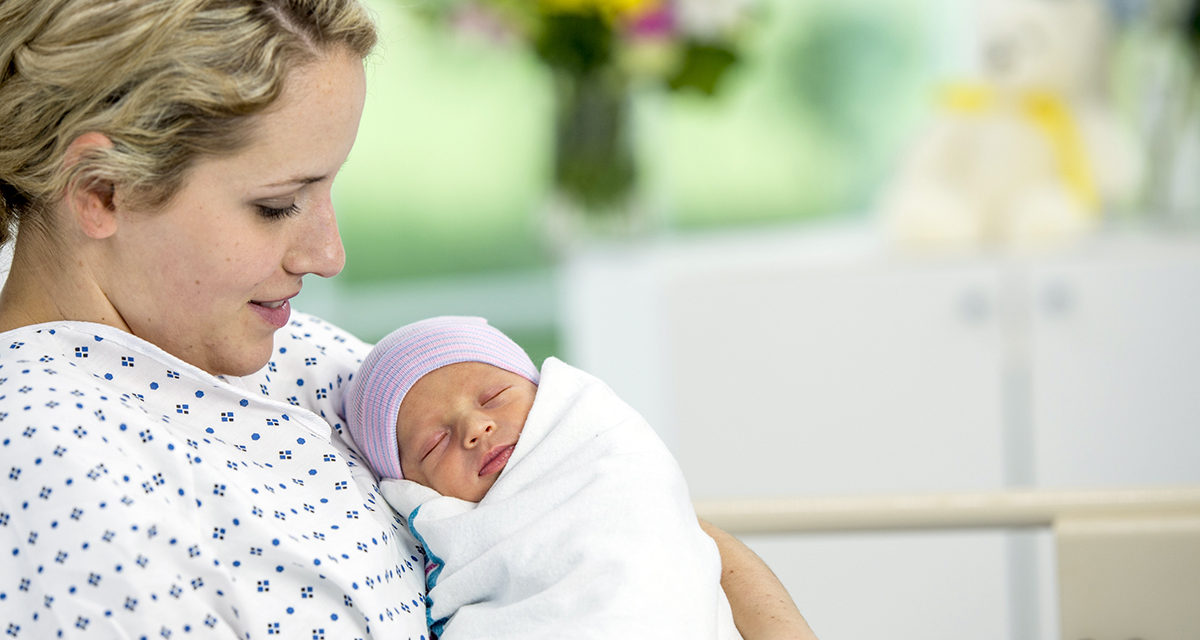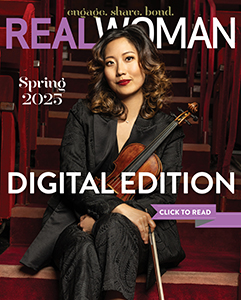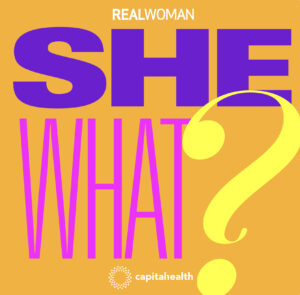It’s not unusual for momentous events to come with months of build-up and anticipation. But the unpredictability, the unscripted unfolding of events, and, yes, the pain make giving birth one of the most indelible experiences in a woman’s life. So when you ask women to share those stories of giving birth, they can usually recall every nurse in the delivery room, the most painful contractions, the most frightening moments, and, of course, meeting their child for the first time.
You’ll hear stories of drug-free labor and women who begged for an epidural before the car even came to a stop in front of the hospital; you’ll hear accounts of scheduled C-sections and emergency ones; you’ll hear rave reviews about supportive husbands, nurses, and doulas and strong opinions on the breast vs. bottle debate.
Luckily, there’s more open-mindedness about the uniqueness of the birth experience than ever before—both on the parts of women and healthcare practitioners, says Patrice Trauffer, M.D., an OB/GYN at Capital Health who specializes in maternal and fetal medicine. “As with many trends in medicine, giving birth has a pendulum swing,” she says. “When I was born in the ’60s, women had very little input on how the birth of their children would take place. As a reaction to that, there was a movement to have more natural births, even outside hospitals. I think that swing forced hospitals to realize that they needed to reform how they handled this very natural process and listen to women and families,” she says.
Case in point: There are a growing number of “baby-friendly” hospitals, a designation sponsored by the World Health Organization and the United Nations Children’s Fund, that recognize hospitals and birthing centers that offer an optimal level of care for the support of mothers when it comes to infant feeding. Capital Health was the second hospital in New Jersey to attain this status and remains one of only four in the state.
“The best thing about giving birth today is that there’s a tremendous amount of support for new mothers and a lot of room for choices, no matter where you deliver and what OB/GYN you see,” says Dr. Trauffer. “The key is talking about those choices, so your doctor knows what you’d like your birth to look like.”
So, what exactly are women hoping for in the delivery room these days—and what are doctors saying about where the pendulum is on its continuously back-and-forth swing? Here’s a glimpse into the state of giving birth right now.
Natural-Born Babies
From the moment Maureen Flatley found out she was pregnant, she knew she wanted to have a drug-free delivery. As her pregnancy progressed, the healthy, active 33-year-old signed up for hypno-birthing classes, which give participants advice and strategies on giving birth naturally. She took regular yoga classes and cleaned up her diet, which was already mostly organic. “It felt clear to me that I wanted to do everything I could to have as natural a childbirth as possible,” says Flatley. “It just seemed like it would be better for the baby, and totally possible for me to do.” Maren Oser, a mom of two who had drug-free vaginal deliveries with both of her daughters, felt similarly, adding that it was also important to her to feel the experience of labor rather than dulling the pain with an epidural. “I actually looked forward to feeling the contractions, and I wanted to be able to move into a variety of positions while I labored,” says the 34-year-old Pennsylvania-based nurse-midwife.
 Flatley and Oser are among a growing number of women who are decidedly not screaming, “Give me the drugs!” while in the throes of labor. Many doctors and nurse-midwives say they’re hearing more women talk about forgoing pain medication during delivery. “I’m definitely seeing more women who don’t want an intervention during labor, such as induction using Pitocin—and the midwives in our practice say they are seeing more patients who want to have drug-free births,” says Kira Przybylko, M.D., an OB/GYN. “I think women are getting a message that any intervention during childbirth is bad, which could be inspiring them to want a completely natural experience.”
Flatley and Oser are among a growing number of women who are decidedly not screaming, “Give me the drugs!” while in the throes of labor. Many doctors and nurse-midwives say they’re hearing more women talk about forgoing pain medication during delivery. “I’m definitely seeing more women who don’t want an intervention during labor, such as induction using Pitocin—and the midwives in our practice say they are seeing more patients who want to have drug-free births,” says Kira Przybylko, M.D., an OB/GYN. “I think women are getting a message that any intervention during childbirth is bad, which could be inspiring them to want a completely natural experience.”
But before you start judging your own desperate pleas for drugs when you gave birth, or the fact that your birth plan includes a “yes” to an epidural, Dr. Przybylko wants you to remember that either decision is fine. “I view it as a patient’s choice—not as a decision that’s good or bad for the baby,” she says. “Sure, there are some risks associated with an epidural. Labor may be prolonged a little, and there is a slight risk of low blood pressure, which can cause decreased bloodflow to placenta and baby. But these risks are pretty negligible, and there’s no medical disadvantage to having an epidural.”
Reassuring news for women like Adriana Jamet, a 35-year-old new mom in San Francisco, who’d wanted to have a drug-free birth but asked for an epidural after nearly three days of labor. “I was exhausted and dealing with back labor—the worst pain in the world,” says Jamet. Even though an epidural wasn’t in Jamet’s birth plan, it gave her much-needed relief—and turned out to be something she was very grateful for in the end. Jamet’s situation is a prime example of what most OB/GYNs tell their patients: “Make your wishes known, but try to be open to all of your options when things don’t go according to your plan,” says Dr. Przybylko.
Breast is Best: Inside the Push to Breastfeed
The research is definitive and the experts are clear: Breastfeeding is hugely beneficial to a baby’s health. The American Academy of Pediatrics (AAP) recommends a full year of breastfeeding and the World Health Organization (WHO) calls for at least six months. And women seem to be getting the message: According to the CDC, about three-quarters of American mothers now breastfeed compared with less than two-thirds in 2000. Women are also breastfeeding for longer periods of time, with about 49 percent making it to that WHO-recommended 6-month mark, compared with just 34 percent in 2000.
Baby-friendly hospitals like Capital Health are one of the reasons for these encouraging statistics. The “baby-friendly” designation means a hospital demonstrates a commitment to providing comprehensive support and education for breastfeeding mothers and their infants—something Claire Kwami, a nurse and lactation specialist at Capital Health in New Jersey, says all new moms need. “Breastfeeding can be overwhelming, and it’s my goal to support our new moms in whatever choice they make,” says Kwami. “I am never pushy, but I see it as my job to explain to new mothers that breastfeeding is a good idea. There are so many benefits—and filling new mothers in on those benefits can really help those who are having a tougher time with it.”
Studies have shown that breastfeeding translates to better health for both babies and mothers—and that those health benefits persist throughout the rest of a child’s and mother’s life, says Kwami. Babies who are breastfed are better able to regulate their breathing and body temperature in the first few days after they’re born, and they have fewer and less-serious illnesses, including a reduced risk of SIDS and less childhood cancer and diabetes. As for the maternal boon, those who breastfeed have decreased risks of breast and ovarian cancer, anemia, and even osteoporosis.
But what about women who can’t breastfeed, or simply find it too difficult—even after receiving lactation support? Kwami says if a woman decides to bottle-feed, that is perfectly OK. In fact, she and the other nurses at Capital Health teach women who aren’t breastfeeding how to bottle-feed, which Kwami says is actually much harder to learn than breastfeeding. “Bottle-feeding can be a lot more work than breastfeeding, so we make sure our new moms who will bottle-feed have all of the information and tools they need to be successful,” she says. “While breastfeeding may be preferable, it might not be possible for some—and it certainly doesn’t make you a bad mother if you choose not to.”










